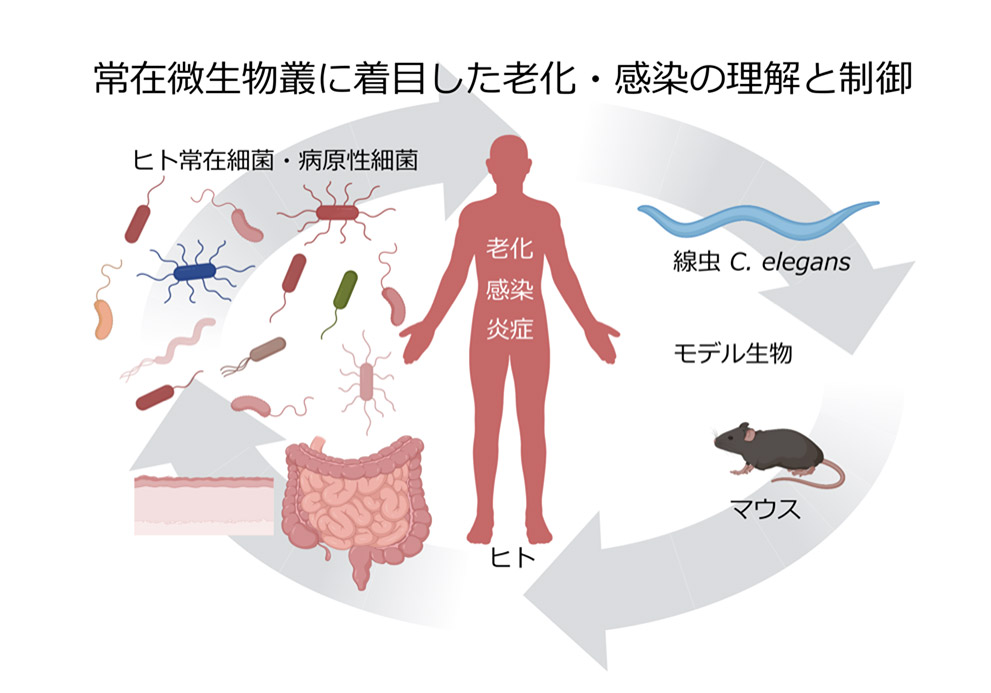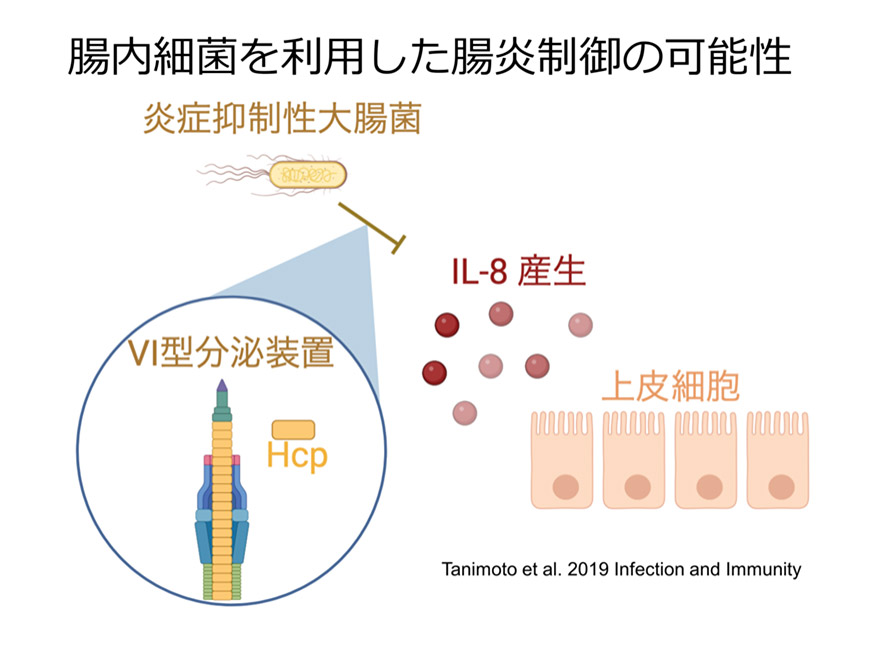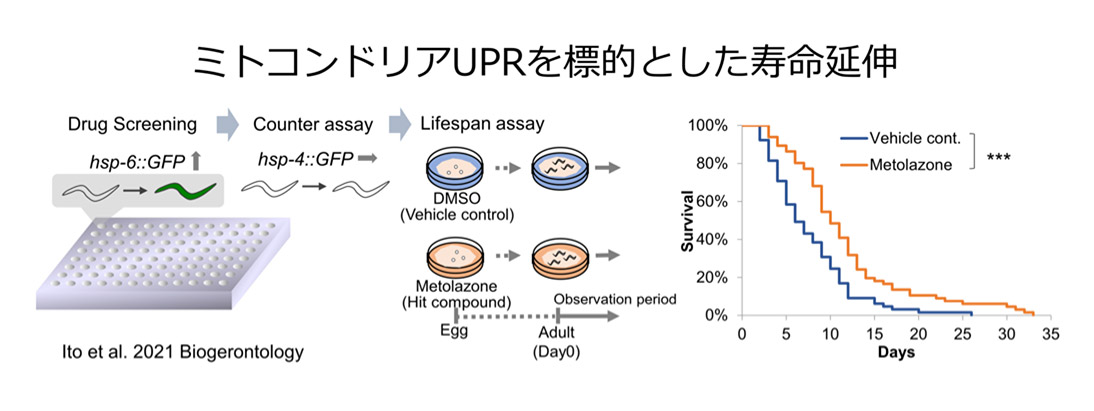MESSAGE FROM THE LAB
RESEARCH
Comprehension and control of aging, infection and microbiota
Microbiota indigenous to the gut and skin are deeply involved in aging, infection, and inflammation of the host. We will try to elucidate the mechanisms and establish control methods of aging, infection and inflammation in order to contribute to human health, using model organisms.
 |
Using C. elegans and mice, we have elucidated the mechanisms of the host-microbiota interactions. Bacteria are interestingly heterogeneous even in the same species, and attractive as a tool that could control aging and infection. |
Prevention and alleviation of the pathophysiology of inflammatory bowel disease, which has been increasing in recent years, is one of the most important issues. Although E. coli is often highlighted for its diarrheagenic properties, we have found that there is a group of E. coli strains that show inhibitory activity in the induction of inflammatory cytokines. We will also search for enterobacterial species and strains that inhibit inflammation. |
 |
 |
Mitochondria are closely related to aging and are a possible target for the control of aging. We have identified pharmaceutical compounds that extend lifespan by activating the mitochondrial UPR through screening using C. elegans. C. elegans is one of the effective model organisms that can provide a simple and rapid approach to phenomena that cannot be evaluated at the cellular level such as lifespan. |




